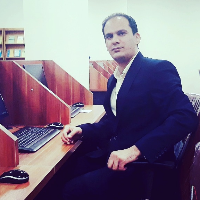Explaining the Social Cleavages in the Election Campaign of Nourabad of Fars
Social Cleavage is the criterion and indicator of dividing society members and its subgroups into different groups in different time and space intervals, which is formed in different ways based on social faults and affected by political developments in the election campaign. Various and numerous social divides are revealed in national and micro-scale geographical spaces such as Nourabad Fars, whose election contests are under the shadow of Illyrian and tribal contexts, between political actors and specifically election candidates. The political developments prevailing in each period (national and local level) and the presence of election candidates in various political spectrums have fueled the social divisions in this constituency and have led to the question, what are the types of social divisions in the election campaign? This question is based on the three identifiers of "typology", "essence" and "formulation" in such a way that the social Cleavages have been discovered, examined and explained on this basis. The current research has a qualitative/analytical nature and the data has been collected in the form of library/documents and based on quantitative statistics. Based on the findings, these results are obtained that the number of social Cleavages governing the different periods of parliamentary elections in Nourabad, Fars, is between a minimum of 4 and a maximum of 10 cleavage affected by election candidates in It has been fluctuating in such a way that with various types and different/diverse natures, the field of dense and intersecting social formations in the election campaigns.
-
Explaining the Factors Affecting the Number of Candidates in the Election Campaigns of the Islamic Council (Case Study: Mamsani and Rostam Constituency)
Hadi Aazami *, Seyed Mohamadhossein Hosseini, Vahid Sadeghi
Journal of Political Strategy, -
Pathology of the Suggested Patterns of Development and Presentation of the Optimal Pattern in Mamasani County (Optimal Pattern: Elite Techno democracy)
Seyed Mohamadhossein Hosseini *, Vahid Sadeghi
Journal of Geography and Human Relations,


